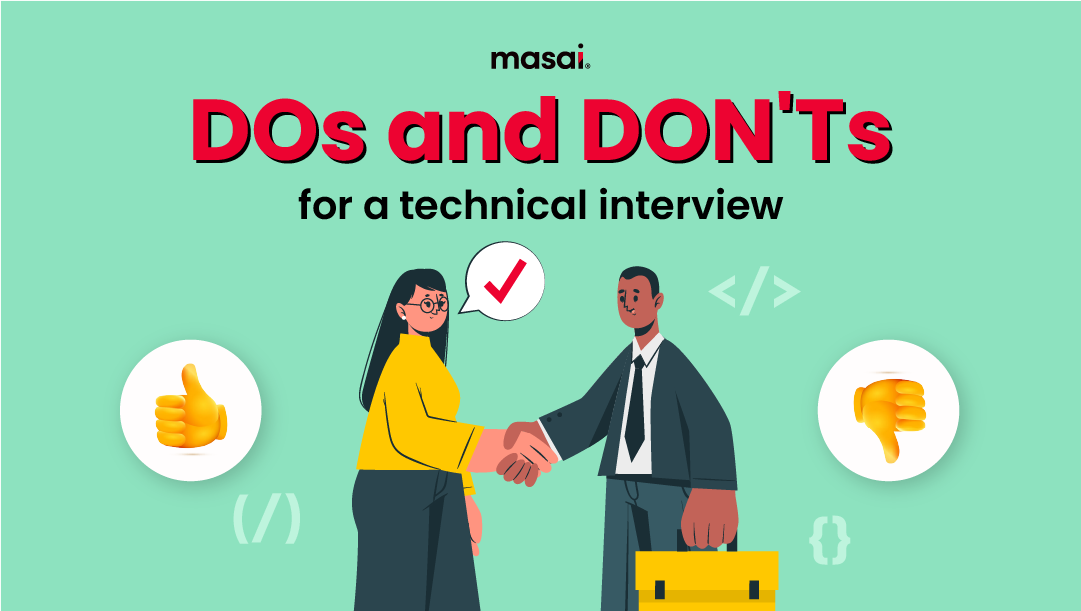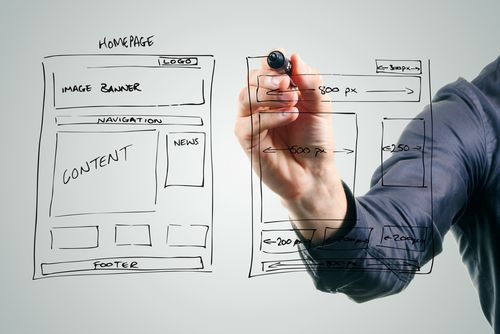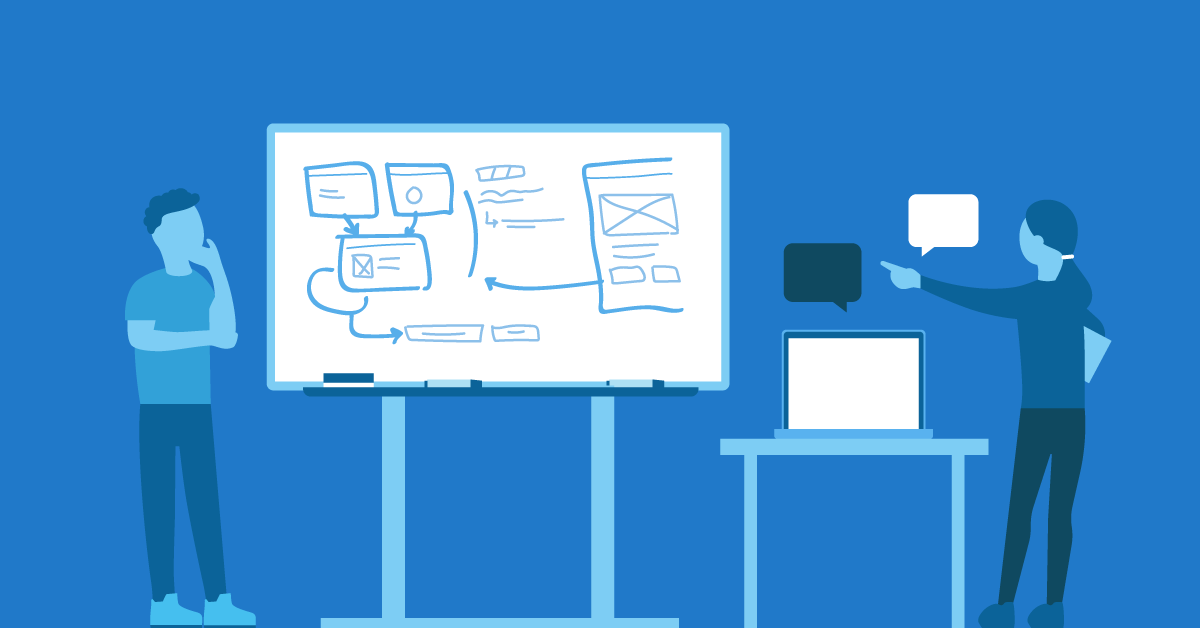Dos and Don'ts of a Technical Interview
Technical interviews are designed to assess your problem-solving skills, your communication skills, and your ability to think under pressure.

Technical interviews are meant to evaluate your capacity for problem-solving, communication, and quick thinking under pressure.
This article serves as a road map, showing how to successfully navigate this path through a combination of planning, effective communication, and a composed, assured demeanour.
If you have ever woken up from a scary dream where you were facing a panel of recruiters who were constantly bombarding you with technical questions left, right, and center, then you have made the correct decision of advancing your career in tech.
For those of you who haven’t, we only have one question- Are you really sure of advancing your career in tech? Don’t be disheartened. We are just pulling your leg and setting the context for everything that is about to unfold in this article.
Technical interviews are designed to assess your problem-solving skills, your communication skills, and your ability to think under pressure.
The process that is used to solve a given challenge is of interest to employers, as it gives them a glimpse into how you would go about solving a real-world problem at work.
If you have reached this far in the article, then it is safe to say that you have decided to embark on the process of preparing for technical interviews.
This article will ease the arduous process a tad bit by handing over a few Dos and Don'ts that could prove to be the differentiating factor between getting ahead of the herd and staying back with them.
Dos of a technical interview
Here are a few things you should do:
Prepare answers for the generic technical interview questions
Many technical interviews begin with generic questions. These questions are meant to make the candidate feel comfortable before it is the turn of tricky ones. We’re talking about questions like, “What’s the hardest engineering problem you’ve solved?” Make sure you go in with well-formatted answers for such questions or at least have things in mind.
This sounds like a trap. But, a closer look would reveal an opportunity.
An opportunity to start the interview on a good note. Similar to the game of cricket, a good start in the interview process can be further used as momentum to deal with tough questions that lie ahead.
Thus having the answers to generic questions ready prior to D-Day can possibly shape great careers.
Here are a few examples of generic questions asked in technical interviews-
- Describe the process you have for a programming task.
- How do you implement your error handling?
- What is your process to test and find bugs in an application?
- What is most important when checking a colleague’s code?
The effort put into preparing answers for generic interview questions might seem small but the impact it can have is huge.
Guide the interviewer towards the answer
Technical interviews have a lot more to do with the process than they have to do with the solution. These interviews evaluate a candidate's ability to communicate and solve problems.
How candidates approach the problem at hand is more crucial than the solution. Can they express their ideas clearly while writing? Are they assembling a concise response to the query?
These are some of the questions interviewers look forward to finding the answers to in an interview.

As much as the interviewers are interested in knowing the solution, they also want to get a hold of your approach to solving it and gauging your problem-solving capabilities.
Tip: While thinking out loud, act as if you're a member of the team to help you communicate your thought process. How would you discuss, clarify, and resolve the issue if this were a real-world scenario? This can help your interviewers get a sense of how you work well with others and how they might hire you.
College students can also opt for our Career Accelerator Program and set themselves up for jobs worth INR 10 LPA(Average CTC).
Stay Calm and Relaxed
The purpose of a job interview is to convince the hiring manager that you are the best candidate.
However, because interviews are frequently perceived as "high stakes" situations, many people feel uneasy and anxious before or during their interviews.
A controlled trial was carried by ACM Digital Library out with 48 computer science students, comparing all of them in private and public settings, to see if coding interviews could cause stress that reduced performance.
It was discovered that students performed 50% less well in public settings where an interviewer was present. When compared to private interviews, their levels of stress and cognitive load were significantly higher.
Stress and anxiety from interviews can manifest as sweaty palms, a racing heart, racing thoughts, and difficulty concentrating. Preparing for an interview can be stressful for those who have little to no experience doing so.
Even experienced professionals with years of interview experience sometimes experience anxiety or overwhelm before, during, or after an interview. The techniques listed below will help you feel less anxious and nervous during interviews, improving your chances of getting the job.
- Breathe deep and slow
- Embrace positive self-talk
- Practice relaxation and confidence-boosting techniques (power posing, relaxation, breathing, etc)
- Research and be prepared
Staying calm and relaxed in an interview is something that does not happen in a fortnight. To build interview confidence a person has to go through a lot of interviews.
Share Real-Life Problem-Solving Stories
Alongside preparing for common technical questions, sharing real-life experiences where you've tackled tough challenges is a great idea. Sharing stories of how you handled complex problems, came up with smart solutions, or worked effectively in a team can give interviewers a clear and valuable picture of your skills and experiences. These stories not only highlight your technical prowess but also your practical problem-solving abilities.
Providing concrete examples from your work or personal projects can make your interview responses more relatable and memorable. Candidates who can bridge the gap between theoretical understanding and real-world application are valued by interviewers.
Ask questions for Clarity
Don't hesitate to ask questions if you're unsure about something in a technical situation. Many candidates assume they understand the problem entirely, but clarifying any doubts is a smart practice. This shows that you are detail-oriented and want to guarantee that you and the interviewer are on the same page.
Effective communication involves offering answers, asking for clarification, and having a common understanding of the situation. By asking thoughtful questions, you show your commitment to delivering accurate solutions and your willingness to collaborate effectively as a team.
Don’ts of a technical interview
Here are a few things you should not do in an interview:
Don’t overcommunicate
Here’s the thing about communication- By definition, communication means conveying certain information in a very clear and unambiguous way.
Communication is super important in coding interviews, but it is generally seen some candidates over-communicate.
A lot of the time, candidates would start solving a problem presented in this way- “So, we have an array here. Since it's an array, we can't really traverse through it linearly unless it's sorted and we can do a binary search which means that we might not be able to sort the array and….”
We see a lack of structured thoughts in the answer here. This ends up coming across as inauthentic. A minute into the answer and it becomes clear to the interviewer that candidates have no idea what they are talking about.
Instead, what would be suggested here is to take a little bit of time to actually think through the problem, and then think through the approaches to the solution.
Once candidates have a clear structure on how they are going to go about solving the problem they can then explain their thought process to the interviewer.
When you give yourself the time, you won't ramble useless words. Instead what you would be doing is communicating to the interviewer your ideas and asking questions where you get stuck. This would be perceived better than over-communicating and coming across as inauthentic.
Don’t shy away from explaining the strategy in detail
It is very much a given fact that candidates have to bring in their knowledge of data structures and algorithms as strategies while solving the problems that come up in an interview.
But if the candidates do not actually explain why the strategies they took into consideration did not work, they might end up sounding like they have no clue what they are talking about.
For example, let’s say you have an array problem at hand and you propose a solution where you want to transform your array into a binary tree and you back it up with reasoning such as “a binary tree would help you traverse faster or maybe use dynamic programming to improve the time complexity of the algorithm”.
The answer is all over the place. It is evident that the candidate is trying to impress the recruiter or filling up space, maybe even over-communicating.

As a result of this, candidates end up coming across as people who don't really know how to solve problems.
A better way to go about solving the array problem here would be to show a small inclination toward a specific data structure.
Throw the data structure to the interviewer. Then, explain the reason behind throwing it out there and then take up an approach that would lead to the solution.
This answer has a strategy. It has a clear, well-thought-out structure and leads to a solution that may or may not be very convincing or correct.
But, at least now the interviewer is clear about the thought process for choosing the data structure.
Maybe it's completely off the mark, but it gives a peek into the candidate’s problem-solving methodology.
Don’t jump into the coding portion of the interview too fast
This mistake could be thought of as being equivalent to the over-communication mistake in terms of the code that would be written.
So you are presented with a problem that has to be solved with tiny bits of code.
As soon as you get the problem, you do not give a thought to the path you would choose for coding out the algorithm you have in mind.
You type out a random number of variables, run loops, if-else conditions, and functions. A few lines of code later you find a few unnecessary variables, loops, and conditions. Before you even realise it, you have stepped on your own code.
What is required of candidates in such situations is to gather their thoughts, and ask the interviewer to spare 30-60 seconds to lay out the structure of the code blocks.
Then explain the same to the interviewer. After the due diligence is done, then they can jump to writing code. It would be advised to even write a few comments, like a commented outline of the code to facilitate deeper and better understanding.
By doing this, candidates create a win-win situation. This shows the recruiter a mindset that gains clarity on the process first and then executes. By focusing on the process it becomes easier to eliminate the pathways that lead to failure.
Don’t abstain from confirming the problem statement with the interviewer
This is a very common mistake that candidates make in coding interviews.
Having clarity of the problem statement facilitates a better understanding of the expected outcome.
After receiving input from the interviewer, candidates can gain clarity on the expected outcome by putting forth examples. This will set clear expectations and save them as well as the interviewer a lot of time.
The practice of gaining clarity on the problem statement helps the candidate give off the impression of a good problem solver to the interviewer.
Steer Clear of Overconfidence
Confidence is undoubtedly a positive trait, but being overly confident can backfire in an interview setting. Instead of immediately jumping into coding or problem-solving, take some time to think through the problem thoroughly. Engage in a constructive discussion with the interviewer to share your initial thoughts and consider their feedback. This approach helps you avoid impulsive mistakes and missteps.
Overconfidence can sometimes lead to rushed decisions and incomplete problem analysis. Maintaining a balanced and cautious approach demonstrates your ability to think critically, evaluate different options, and arrive at well-considered solutions.
Remember Your Soft Skills
While technical skills are undoubtedly crucial, don't underestimate the importance of your soft skills. Communication, teamwork, adaptability, and interpersonal abilities, including technical roles, are highly valuable in any job. Even if you're a coding prodigy, your ability to explain your thought process clearly and receive feedback graciously can leave a lasting impression.
Technical interviews assess more than just your coding skills; they also evaluate how well you'd fit into a team and contribute to a positive work environment. Therefore, balancing technical proficiency with strong, soft skills is essential to excel in technical interviews and succeed in your career.
Conclusion
We hope this article added perspective for readers in terms of what they should and should not do to crack a technical interview.
Interviews are all about taking an interviewer on a journey that ends with the solutions to a problem.

